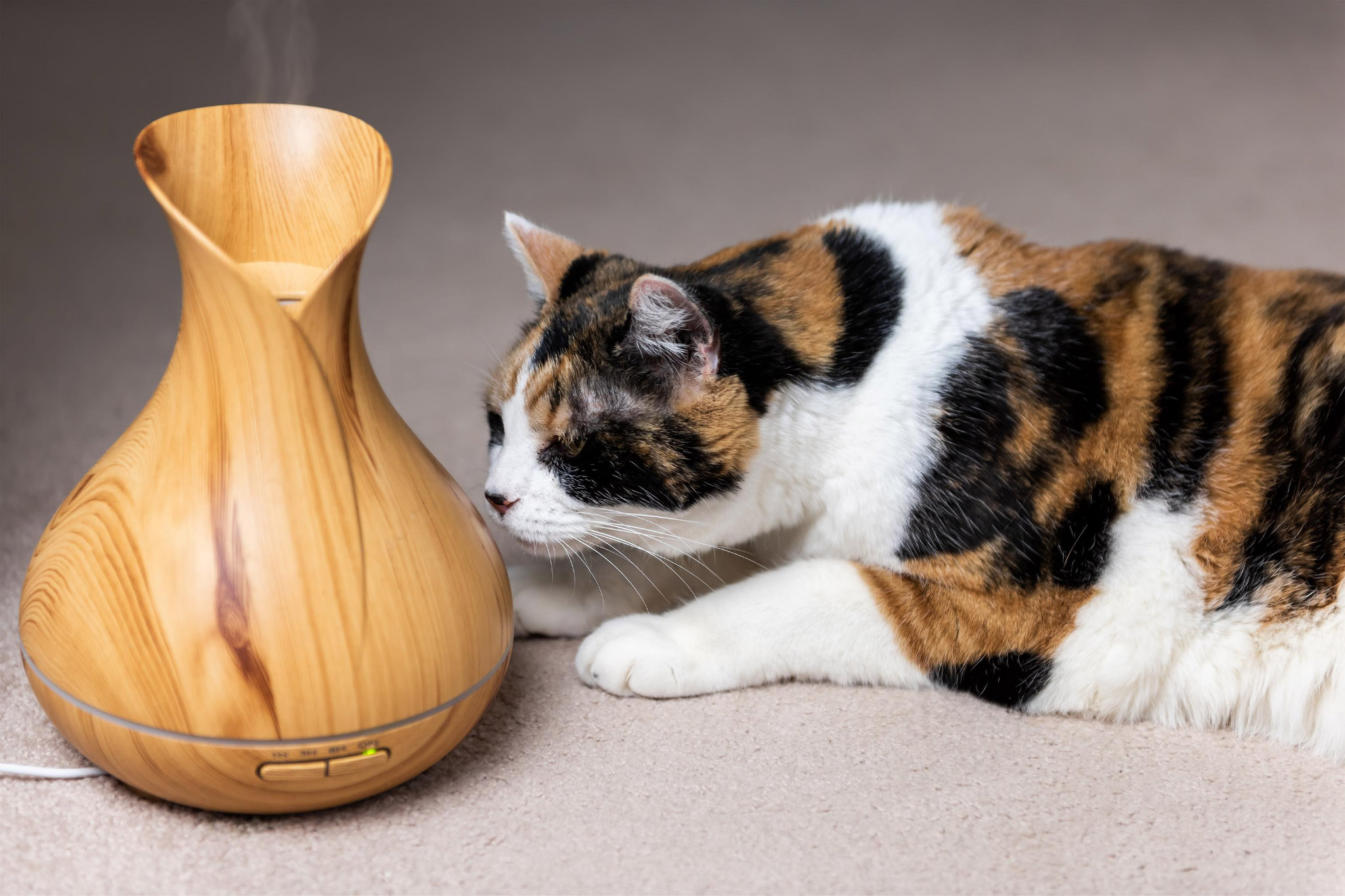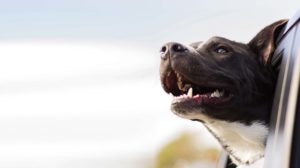Why are essential oils toxic to pets?
Essential oils should not be ingested in any form by our pets.
Cats lack the essential enzymes in their liver to metabolize and eliminate the chemical compounds in essential oils, therefore all essential oils have the potential to be toxic to cats. Dogs do not have the same enzyme deficiency, but they can still be at risk of irritation or toxicity due to the concentrated nature of essential oils.
How to safely use essential oils around pets
To safely use essential oils around our pets, we first need to understand a bit more about how essential oils are most commonly used in our homes.
There are two broad categories of essential oil diffusers that you can buy, categorised as ‘active’ or ‘passive’ diffusers. Active diffusers emit particles of the oil into the air creating a light mist. These include humidifiers and vaporisers, glass nebulisers and ultrasonic diffusers. Be aware that the mist may land on furniture, bedding or your pet’s coat and be ingested while grooming.
Passive diffusers include reed or evaporative diffusers, candle or heat diffusers. They emit a less intense aromatic scent as there is no mechanism forcing the essential oil into the air. These are generally a safer option around the house with pets, however, we always recommend you chat with your vet prior to use.
Pets with existing respiratory conditions are at greater risk of developing respiratory distress. If your pet has any existing respiratory conditions, it is suggested to avoid the use of essential oils in your home.
With the increasing popularity of essential oil diffusers, remember these quick tips to keep your pets safe:
- Always consult your Vet prior to use and follow label instructions
- Avoid using oils in the same room as pets, and ensure all essential oil products are kept out of reach
- Never leave your pet unattended around essential oil diffuser/vaporiser products
- Source high quality and pure oils to avoid any potentially dangerous fillers
Essential oils to avoid around pets
Like with people, all pets are different, so it’s always best to consult with your Vet prior to using essential oils in your home. Oils that are particularly toxic and best to avoid include:
Cats
- Cinnamon and cassia
- Citrus (lemon, lime, grapefruit, orange)
- Clove
- Bergamot
- Basil
- Eucalyptus
- Geranium
- Lavender
- Oregano
- Peppermint
- Pennyroyal
- Pine oils
- Spruce
- Tea Tree
- Thyme
- Wintergreen
- Ylang ylang
Dogs
- Clove
- Eucalyptus
- Garlic
- Geranium
- Juniper
- Pennyroyal
- Pine oils
- Rosemary
- Tea Tree
- Thyme
- Wintergreen
- Ylang ylang
Signs of essential oil toxicity
One of the greatest risks of essential oils to cats and dogs is respiratory irritation. Respiratory irritation can present as:
- Watery eyes and nose
- Throat and nose irritation/burning
- Nausea causing drooling and/or vomiting
- Breathing difficulties shown by labored breathing, increased breathing rate, panting, coughing or wheezing.
Immediate treatment can be applied by moving your pet into fresh air, however if symptoms persist or you’re concerned, please consult your Vet as quickly as possible.
Does pet insurance cover essential oil toxicity?
Essential oil toxicity from oils used in your home are generally covered by Comprehensive Accidental Injury and Illness pet insurance policies administered by PetSure (check our brand partners at petsure.gholab.com.au/partners), unless related to a pre-existing condition or exclusion. Please note essential oils used on your pet as treatment or alternative therapy are not covered. Refer to your policy documents and Product Disclosure Statement for more information.
The author of this article has been updated. Dr Claire Sharp was attributed as the author, and we unreservedly apologise to her and to the author for crediting her as the author of the article.
Pet insurance can help by covering a portion of the eligible vet bill if the unexpected happens. Because it is difficult to predict the costs of veterinary care, it can help to have measures in place to help prepare for the unexpected. Check out our partner network and explore our policy tools to find a pet insurance policy.
Not all conditions or items are covered by Pet Insurance. Refer to the applicable Product Disclosure Statement for information about coverage and exclusions.








